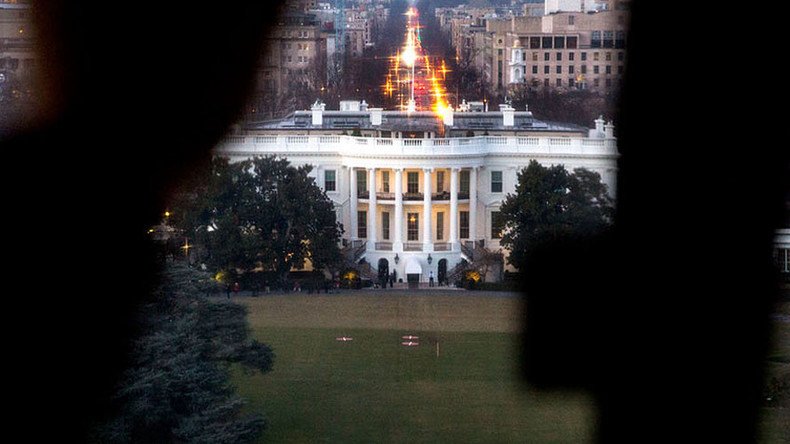So this is how the US ‘revolution’ will unfold

In late 2012, Peter Turchin, a professor at the University of Connecticut made a startling claim, based on an analysis of revolutionary upheavals across history.
He found there are three social conditions in place shortly before all major outbreaks of social violence: an increase in the elite population; a decrease in the living standards of the masses; and huge levels of government indebtedness.
The statistical model his team developed suggested that, on this basis, a major wave of social upheaval and revolutionary violence is set to take place in the US in 2020. His model had no way to predict who would lead the charge; but this week's election gives an indication of how it is likely to unfold.
Let's take the first condition, which Turchin calls "elite overproduction,” defined as "an increased number of aspirants for the limited supply of elite positions.” The US has clearly been heading in this direction for some time, with the number of billionaires increasing more than tenfold from 1987 (41 billionaires) to 2012 (425 billionaires). But the ruling class split between, for example, industrialists and financiers, has apparently reached fever pitch with Trump vs. Clinton.
As Turchin explains, "increased intra-elite competition leads to the formation of rival patronage networks vying for state rewards. As a result, elites become riven by increasing rivalry and factionalism." Indeed, based on analysis of thousands of incidents of civil violence across world history, Turchin concluded that "the most reliable predictor of state collapse and high political instability was elite overproduction.”
UPDATE: President-elect Donald J. Trump's electoral vote total now stands at 290 after winning #Arizonahttps://t.co/fAHZPAqyjRpic.twitter.com/frD9NpWPqn
— RT America (@RT_America) 9 ноября 2016 г.
The second condition, popular immiseration, is also well advanced. 46 million US citizens live in poverty (defined as receiving an income less than is required to cover their basic needs), while over 12 million US households are now considered food insecure. While this figure has been coming down consistently since 2011 (when it reached over 15 million), it remains above its pre-recession (per-2007) levels.
Trump's policies are likely to sharply reverse this decrease. Trump's second promise in his 'contract with voters' is a "hiring freeze on all federal employees,” amounting to a new onslaught on public sector jobs. This is in addition to what seems to be a promise to end the direct funding of state education (to, in his words, "redirect education dollars to...parents"), and to end all federal funding to so-called 'sanctuary cities', that is cities which do not order the state harassment of immigrants or force employers to reveal the nationalities of their workers. These cities are some of the most populated in the country, including NYC, LA, Dallas, Minneapolis and over two dozen others.
In concert with his avowed intention to lower taxes on the wealthy, including slashing business tax from 35 to 15 percent; to smash hard fought workers' rights (under the mantra of 'deregulation'); and to scrap what little access to healthcare was made available to the poor through Obamacare - not to mention his threat to start a trade war with China - poverty looks set to skyrocket. It is not hard to see how social unrest will follow.
EU Commission president wants to clarify #Trump's stances on #NATOhttps://t.co/8PdaaUxaikpic.twitter.com/fNgzl3ntyP
— RT (@RT_com) 10 ноября 2016 г.
As for the third condition - government indebtedness - it is hard to see how the massive tax breaks Trump has proposed can lead to anything else.
Turchin writes that "As all these trends intensify, the end result is state fiscal crisis and bankruptcy and consequent loss of military control; elite movements of regional and national rebellion; and a combination of elite-mobilized and popular uprisings that manifest the breakdown of central authority."
But Trump is also preparing for that. Exempt from his public spending cuts, of course, are police and military budgets, both of which he promises to increase. And when questioned on the issue of police brutality last year, Trump said he wanted to see the police be given more powers. In other words, the tacit impunity which currently exists for police violence looks set to be legalized. And history shows that there is nothing like police impunity to spark a riot.
#BREAKING: #Trump campaign manager does not rule out special prosecutor for Hillary #Clinton - MSNBC https://t.co/XjbVMc2O37#USElection2016pic.twitter.com/UxLakx0PMY
— RT America (@RT_America) 9 ноября 2016 г.
Meanwhile, as his policies fail to deliver the land of milk and honey he has promised, the demonization of scapegoats will continue. Having already vowed to round up and deport two million immigrants, and to ban Muslims from entering the US, it is already clear who these scapegoats will be. However, as well as migrants, popular anger will also be directed toward whatever namby-pamby liberals have blocked him from waging his promised war against them: be it Congressmen, judges, trade unions, pressure groups, or whoever. A combination of increased executive powers plus the use of his newly mobilized mass constituency will be directed toward purging these 'enemies within'.
"My model suggests that the next [peak in violence] will be worse than the one in 1970" says Turchin, "because demographic variables such as wages, standards of living and a number of measures of intra-elite confrontation are all much worse this time". All that remains to be seen is - who will win.
The statements, views and opinions expressed in this column are solely those of the author and do not necessarily represent those of RT.













